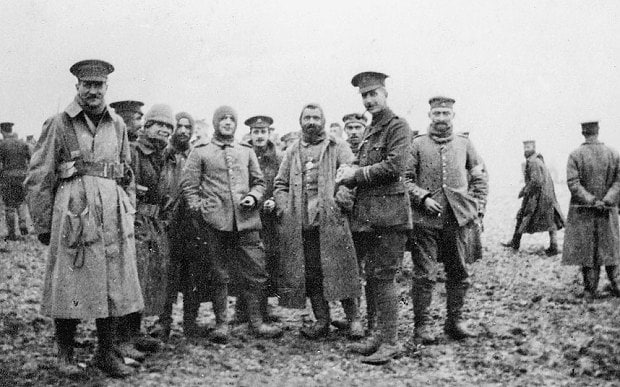The year was 1914, the first year of the conflict that came to be known among its contemporaries as ‘The Great War’, and ultimately came to be known to us in the modern day as World War One.
By Christmas Eve of 1914, the war had been going on for five months. Many early observers had assumed the conflict would be long over by December – all such hopes were dashed. By this time, the static trenches had already been dug, and the horrific conditions on the front lines that characterized most of The Great War had already been dug.
Pope Benedict XV went so far as to send letters to the leaders of the belligerents, begging them to respect the Christmas holiday and allow a truce of a single day – to no avail.
But while the military high command on all sides refused to consider the Pope’s plea, the actual men serving on the front lines were more amenable to spending a few hours singing carols, playing football, and sharing drinks with the men they had been shooting at only the previous day, and whom they would resume shooting at the following day.
Exactly how many men participated in the Christmas Eve cessation of hostilities on the Western Front, no one knows for sure, but most estimates put the number at over 100,000. After the various command officers found out about the fraternization after the fact, most of the enlisted who had participated were moved to other parts of the front – out of concern that they would be less willing to fight the men with whom they had shared a pickup game of soccer.
The officers who had participated were… less fortunate. Many were intentionally transferred to more dangerous posts, as punishment for allowing their men to fraternize with the enemy.
By the time December of 1915 rolled around, strict orders from high command on all sides had been given prohibiting any repeat of the 1914 Christmas truces, and numerous orders were given to units to charge at or shell enemy trenches specifically to forestall repeats. A few ceasefires managed to happen all the same.
Sporadic Christmas ceasefires continued to happen throughout the war, but never in remotely the same numbers.
As part of their upcoming album (to be released in March of 2022), Sabaton decided to immortalize this event.
This is a slightly more realistic re-enactment of the event, as shown in the 2005 film [i]Joyeaux Noel[/i].
